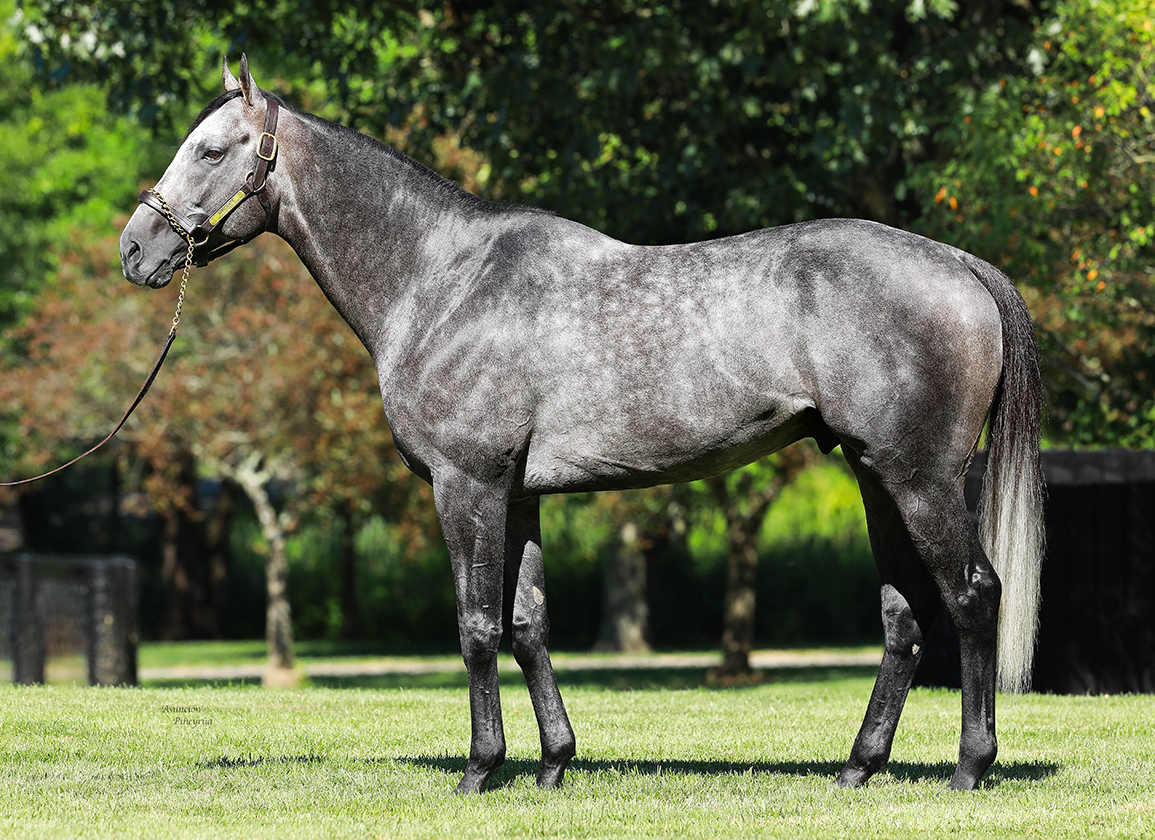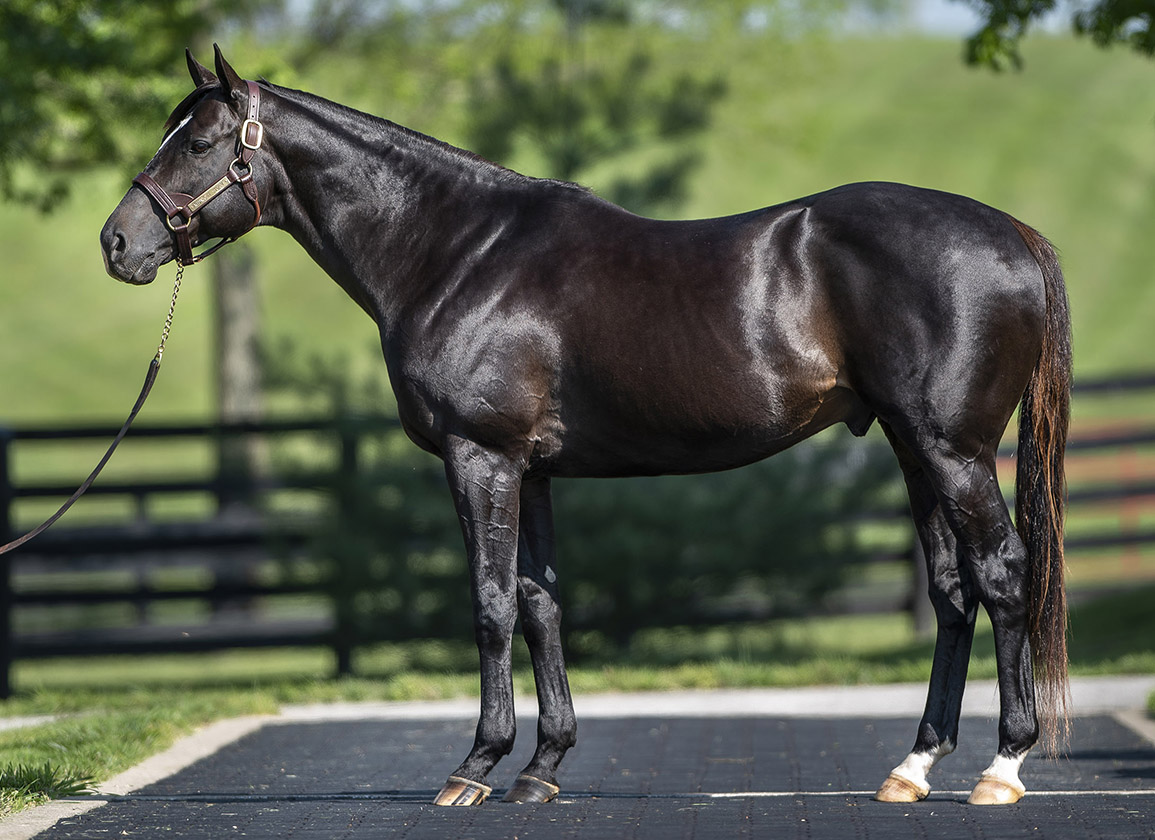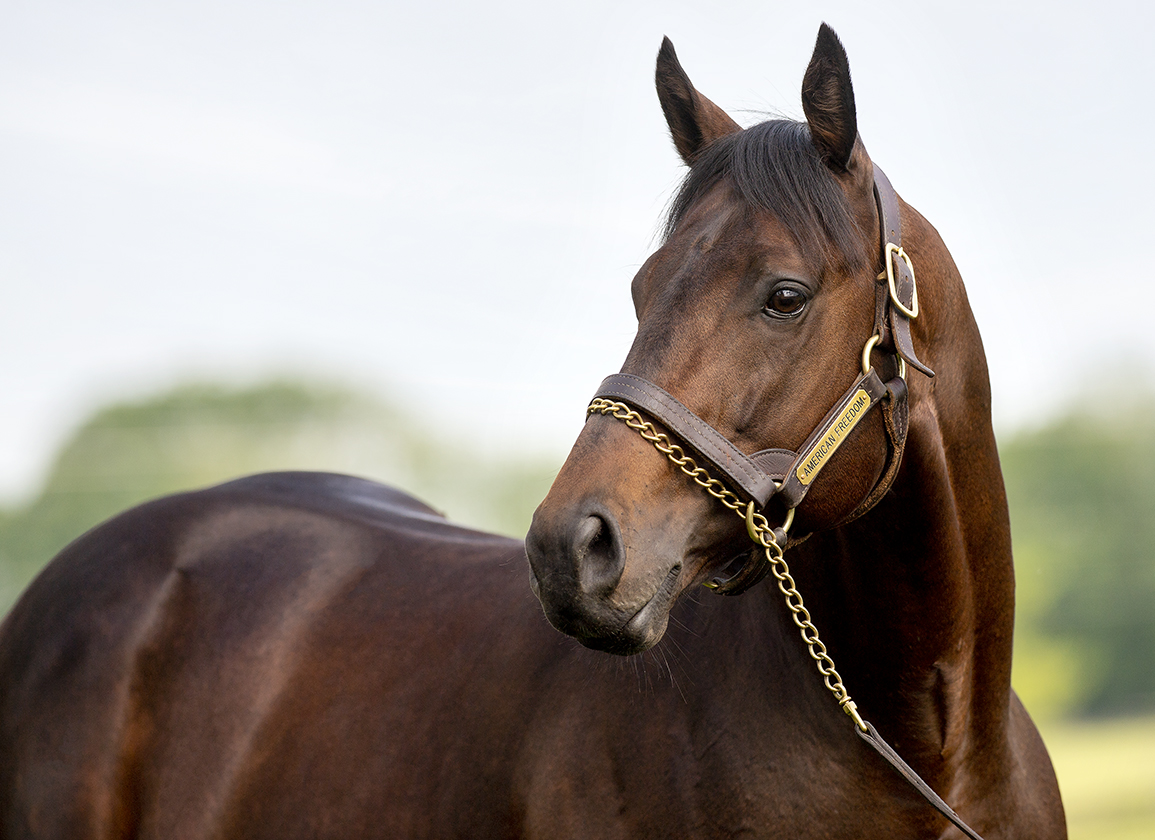If you like to sift through numbers, a few stand out from Saturday's GI Runhappy Travers S. card at Saratoga Race Course.
How about six Grade I stakes, whose winners all earned triple-digit Beyer Speed Figures? They weren't big-figure blowouts either. Five of those ultra-competitive races were decided by a half-length or less at the wire.
Nine winning favorites from 13 races also catches the eye. As does the four-win performance by jockey Joel Rosario.
But the most mind-boggling numeric notation from the summer's biggest day of racing appeared in superscript type for the chart for the Travers itself: The final quarter-mile of the length-of-stretch slugfest between 'TDN Rising Star' Essential Quality (Tapit) and runner-up Midnight Bourbon (Tiznow) was clocked in an astoundingly fast :23.15.
Midnight Bourbon broke fluidly from the rail and immediately claimed the top spot. Yet it was Essential Quality, even after a slight stumble and bump at the break, who really seemed to be in control of the pace while stalking in second. Midnight Bourbon got away with relatively soft back-to-back opening quarters in :24.18 and :24.78–but only because the juvenile champ and GI Belmont S. winner allowed him to.
With Essential Quality on the prowl in ever-dangerous stalk mode under Luis Saez, Midnight Bourbon and Ricardo Santana, Jr. were permitted to milk the third quarter mile of the Travers even slower, to :25.53.
This equated to a six-furlong split of 1:14.49, which theoretically should have afforded tactical advantage to the pacemaking Midnight Bourbon. Yet Essential Quality began to reliably uncoil a half-mile from home, and Saez never appeared rushed or panicked, engaging on the gray favorite's own terms by incrementally eroding Midnight Bourbon's open-length margin through a far-turn fourth quarter clocked in :24.32.
After a 1:38.31 mile, Essential Quality pulled even outside of Midnight Bourbon upon cresting the quarter pole, and they brushed and battled in determined lockstep. Midnight Bourbon drifted slightly–the first sign that Essential Quality's overdriven torque was getting to him–yet Midnight Bourbon admirably remained engaged and briefly re-seized the lead a furlong from the wire.
This is the type of deep-stretch fight that Essential Quality relishes and excels at though, and he purposely powered past Midnight Bourbon within the final 100 yards to prevail by a tenacious neck in 2:01.96 for 10 furlongs.
Of Essential Quality's eight wins, five have now come by margins of a length or less. His 107 Beyer seems about right (two points off his career-best 109 earned in the Belmont S.).
But to throttle up the tempo to :23.15 for the final two furlongs of the Travers borders on outer-worldly. Was the first mile of that race really so relatively untaxing that Essential Quality and Midnight Bourbon could both uncork such a swift stretch kick? (The five Travers also-rans were non-factors throughout the race.)
For perspective, know that no final furlong of the Travers has been run faster in the last three decades (Equibase maintains Travers charts dating only to 1991; TDN would welcome a deeper dive by anyone who has access to a more complete set of data).
Between 1991 and 2015, only two editions of the Travers featured sub-:25 final quarters: In 1993, Sea Hero's off-the-pace score (aided by a too-fast-to-last speed duel) finished up in :24.90. In 2000, Unshaded's length-of-stretch reeling-in of Albert the Great went in :24.93.
Quite a few elite horses won the Travers during that same time frame–Holy Bull, Point Given, Medaglia d'Oro and Bernardini among them. Yet the final quarters of all of their Travers victories ranged between :25.09 and :27.20.
Something shifted in 2016, though. That's when Arrogate burst onto the scene with a 13 1/2-length Travers annihilation. He established a Saratoga track record for 1 1/4 miles in 1:59.36, and even though he had zero competition while drawing clear late in the lane, his final quarter mile was a blistering :23.84.
In 2017, West Coast won the Travers while on the lead throughout, and he too joined the under-:25 club with a :24.37 final-quarter clocking. In 2020, Tiz the Law followed suit with a :24.53 Travers stretch run.
Does Essential Quality's winning run, with its gaudy :23.15 final quarter, suggest the outer limits of a Travers trend that has been in the making? And what does it mean when only two horses in a quarter-century manage sub-:25 final quarters in the Travers, then all of a sudden, within a six year span, four horses accomplish that feat?
Prior to Arrogate, General Assembly owned the Spa track record for 10 furlongs. When he established that mark in the 1979 Travers, the New York Times made it a point to report that “His last quarter, when he increased his lead from four lengths to the final 15, was particularly impressing. He ran it in :24 1/5 seconds.”
Although it can be dicey to broaden the scope of comparison away from Saratoga and the Travers, it has to be stated that the ultimate benchmark for final quarter-mile proficiency in a 10-furlong dirt race is Secretariat's 1973 GI Kentucky Derby. He established a 1:59 2/5 track record that still stands, punctuating a tour-de-force stretch bid with a :23 1/5 final quarter (back when fifth-of-a-second timing was the standard).
So did Essential Quality (and Midnight Bourbon, for that matter) unleash performances in the Travers that truly deserve to be mentioned in the same breath as Secretariat's lofty standard?
“Time will tell,” could be a possible answer to that question. But raw clockings aren't always as straightforward as they seem when trying to understand the overall intricacies of any given race.
The post The Week in Review: Numbers Don’t Lie, But They Can Be Perplexing appeared first on TDN | Thoroughbred Daily News | Horse Racing News, Results and Video | Thoroughbred Breeding and Auctions.


 service which is partially based on breeze time, stride length, and efficiency of angulation. Since 2006, this product has been utilized at sales by buyers and sellers, as well as being offered every day as a handicapping tool at Daily Racing Form's website.
service which is partially based on breeze time, stride length, and efficiency of angulation. Since 2006, this product has been utilized at sales by buyers and sellers, as well as being offered every day as a handicapping tool at Daily Racing Form's website.


